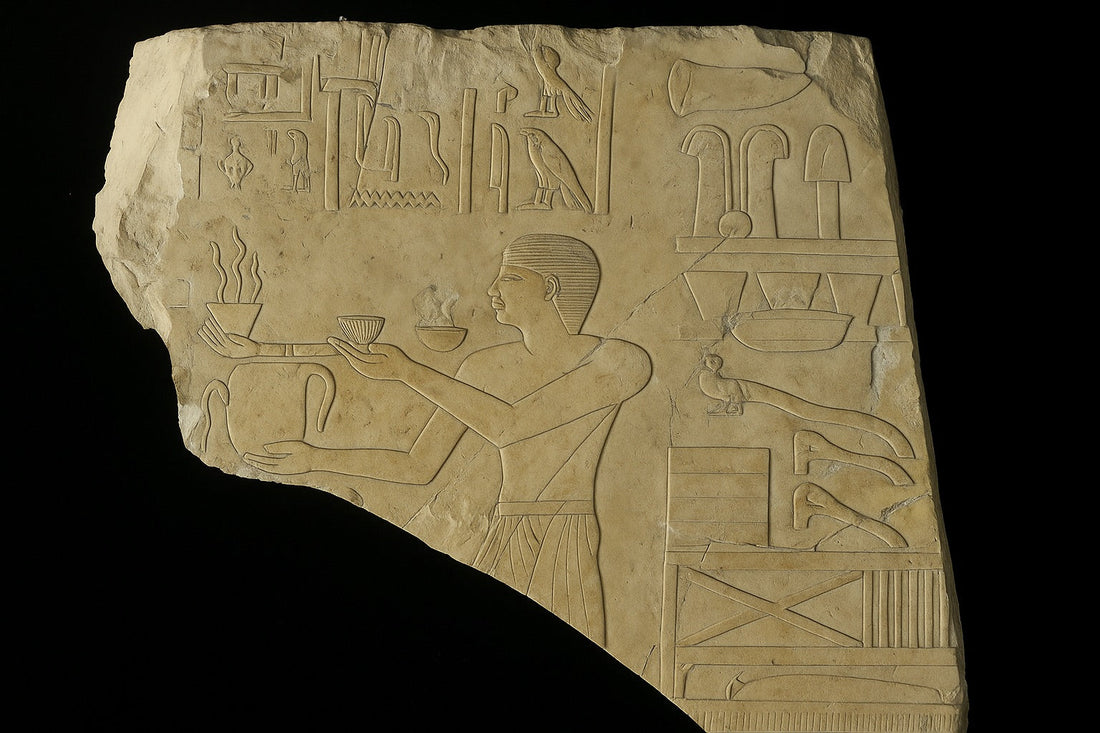
The Ancient Art of Incense: A Global History of Fragrance and Ritual
From smoky temples in India to serene Zen gardens in Japan, incense has travelled through time, geography, and belief systems. It's more than just fragrant smoke—it's a symbol of connection, cleansing, spirituality, and memory.
This post explores the fascinating history of incense, tracing its roots from ancient rituals to modern mindfulness practices. We'll look at how it evolved in various cultures, how it was made, and why its scent continues to resonate today.
What Is Incense and how is incense made?

Incense is any plant-based material that releases fragrant smoke when burned. Traditionally, it’s made of aromatic resins, barks, roots, herbs, and oils. It can appear in many forms: sticks, cones, coils, powders, or raw resins.
But beyond scent, incense has always carried meaning. Across ancient civilizations, incense was used to honour gods, purify spaces, and mark sacred time.
Ancient Beginnings: Egypt, Mesopotamia, and the Cradle of Civilization
One of the earliest recorded uses of incense dates back to ancient Egypt, where it was burned during religious ceremonies and embalming rituals.
Egyptians believed that smoke carried prayers to the heavens. Kyphi, a sacred incense blend made of honey, wine, raisins, and 16 other ingredients, was burned nightly in temples and tombs.
Manniche, L. (1999). Sacred Luxuries: Fragrance, Aromatherapy, and Cosmetics in Ancient Egypt.
Meanwhile, in Mesopotamia, incense played a role in temple offerings to deities like Ishtar and Marduk. Scented gums like frankincense and myrrh were imported over vast trade routes.
Sacred Smoke in the Middle East
In the Middle East, incense became central to both religious and social life. Frankincense and myrrh—native to the Arabian Peninsula and East Africa—were highly valued and traded along the Incense Route, connecting Arabia, India, and the Mediterranean.
Groom, N. (1981). Frankincense and Myrrh: A Study of the Arabian Incense Trade.
In Judaism and early Christianity, incense was burned in temples and churches to purify worship spaces and create a sense of sacred atmosphere. This tradition continues today in Orthodox and Catholic services.
India: The Spiritual Home of Incense
India is often seen as the birthplace of spiritual incense use. Incense is deeply tied to Hinduism, Buddhism, and Ayurveda. Ancient Vedic texts from over 3,000 years ago mention the use of aromatic herbs in rituals and healing.
Indian incense sticks, known as agarbatti, became widespread during the classical period, especially with the spread of Buddhism across Asia.
Kapoor, L. D. (1990). Handbook of Ayurvedic Medicinal Plants.
Common ingredients include sandalwood, patchouli, vetiver, and guggul (a type of resin). These were not only spiritually significant but also used in aromatherapy to treat various ailments.
East Asia: Japan and China Refine the Art
In China, incense was introduced from India along the Silk Road and quickly absorbed into Daoist and Buddhist rituals. It became essential in temples, ancestor worship, and even in timekeeping. Scholars would burn incense sticks to measure hours during study.
In Japan, incense evolved into a refined art called Kōdō (The Way of Incense). During the Heian period (794–1185), aristocrats gathered to listen to incense and compose poetry based on scent.
Morita, S. (1992). Kōdō: The Way of Incense in Japanese Culture.
Japanese incense sticks are typically coreless and made with natural woods and spices—designed to produce minimal smoke and maximum subtlety.
Incense in the Modern World
Today, incense has found new meaning. While it still plays a role in traditional religious settings, it’s now widely used for:
- Mindfulness and meditation
- Home fragrance and ambience
- Emotional balance and stress relief
- Cultural rituals and ceremonies
Modern incense reflects a blend of East and West, with global influences shaping new scent profiles and sustainable practices.
Conclusion: A Tradition That Still Breathes
For thousands of years, incense has offered us a way to slow down, honour the moment, and connect with something bigger. It’s a bridge between the material and the spiritual, between memory and presence.
Whether you’re lighting incense for meditation, ritual, or simply to set the mood at home, you’re participating in a rich, global tradition that continues to evolve—one breath at a time.
